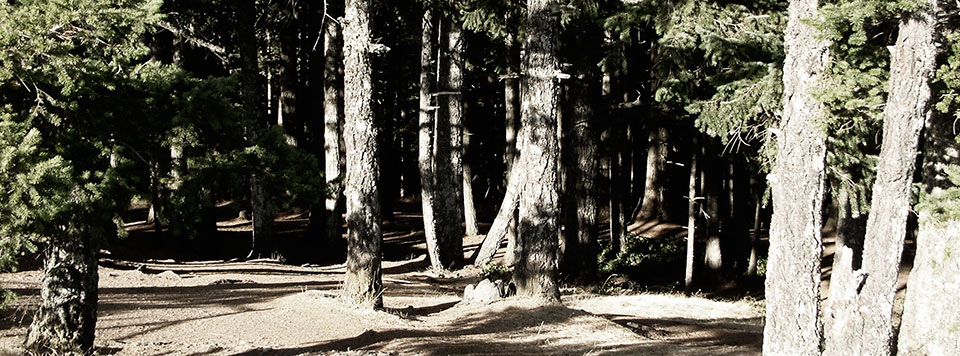Eine Erscheinung aus den Wäldern
2008
Feeling sidelined as a minor, regional composer far from the musical heartlands of Vienna and Leipzig, Sibelius wrote in his diary that “as a personality and ’eine Erscheinung aus den Wäldern’, you will have your small, modest place”. The German phrase means “an apparition from the woods”; Sibelius meant “the woods” partly as we might today disparagingly refer to anywhere outside the metropolis as “the sticks”. Finland was (and is) heavily forested, and Sibelius worked at Ainola, in a rustic house in the woods outside Helsinki, literally therefore, appearing from the woods into the civilised world, freshly-composed symphony in hands. In a sense, I feel an affinity with Sibelius’s sentiment, leading me to borrow his phrase for the title of my new piano trio. I’m sure I share with many composers today the sense of working well away from the current popularity-obsessed musical mainstream — we’re unlikely to appear on Britain’s Got Talent, after all. Moreover, even within that loose collection of “contemporary classical” musicians, there are trends and fashions from which I sometimes feel remote. Indeed I was once angrily branded a “retro” composer by a long-bearded, sandalled man in a purple tie-dye shirt for marking a new composition andante con moto.
The association with the woods, and more broadly, the “nature-versus-metropolis” theme, goes much further than this metaphorical or political subtext. I tend to think (and compose) most clearly when away from the town, whether hiking in the Alps, or actually walking in the woods. This piece is influenced by the sounds, experience, and imagination of the outdoors. In particular, I have borrowed the songs of my garden’s avian inhabitants.
My Eine Erscheinung aus den Wäldern is in three movements of rougly similar length. The first, opening with a bold “call” or “cry” on the piano, alternates between gentle, rubato dialogue in the strings and the more agitated calls of the piano, which are taken up by the violin and cello before a resolution emerges from the introspective “dialogue” music. The second movement is made up of two reflective sections — blending pensive intonations in the cello with a darker, scordatura (de-tuned) violin — surrounding an exuberant passage for solo piano inspired by the chatterings of animals and birds. The final movement is essentially two pieces of music intertwined: one opening with heavy, angry, low chords that gradually become serene and gentle, and the other beginning with a high, calm, slow melody which descends, become more energetic over the course of the movement, finally melding into a reprise of the first movement’s “call” music.

Duration
18 minutes
Instrumentation
Piano trio (vn, vc, pf)
First performance
Radius (Alexandra Wood, violin; Oliver Coates, cello; John Reid, piano), Purcell Room, London, 10th November 2008.
Listen
Request a score / parts
If you would like to see a score and/or require a set of parts for this music, please contact me.